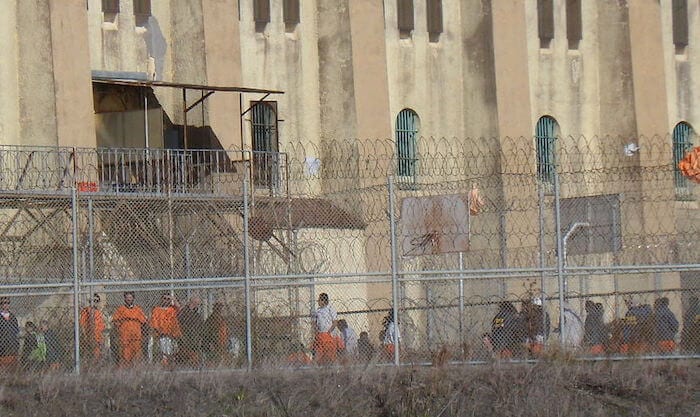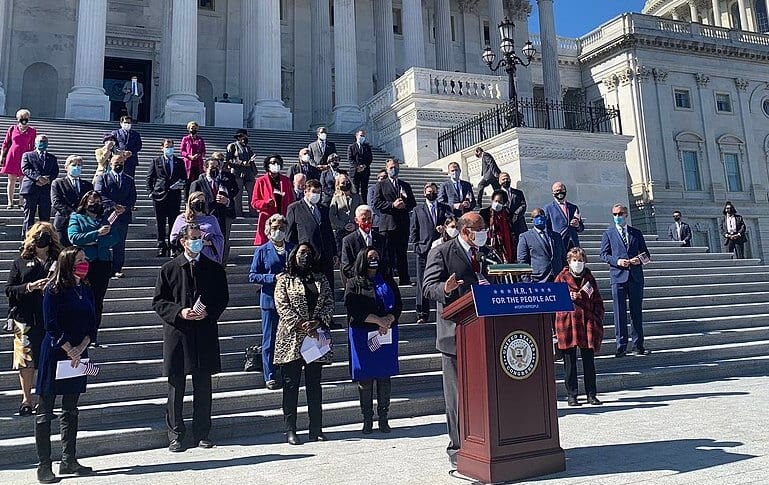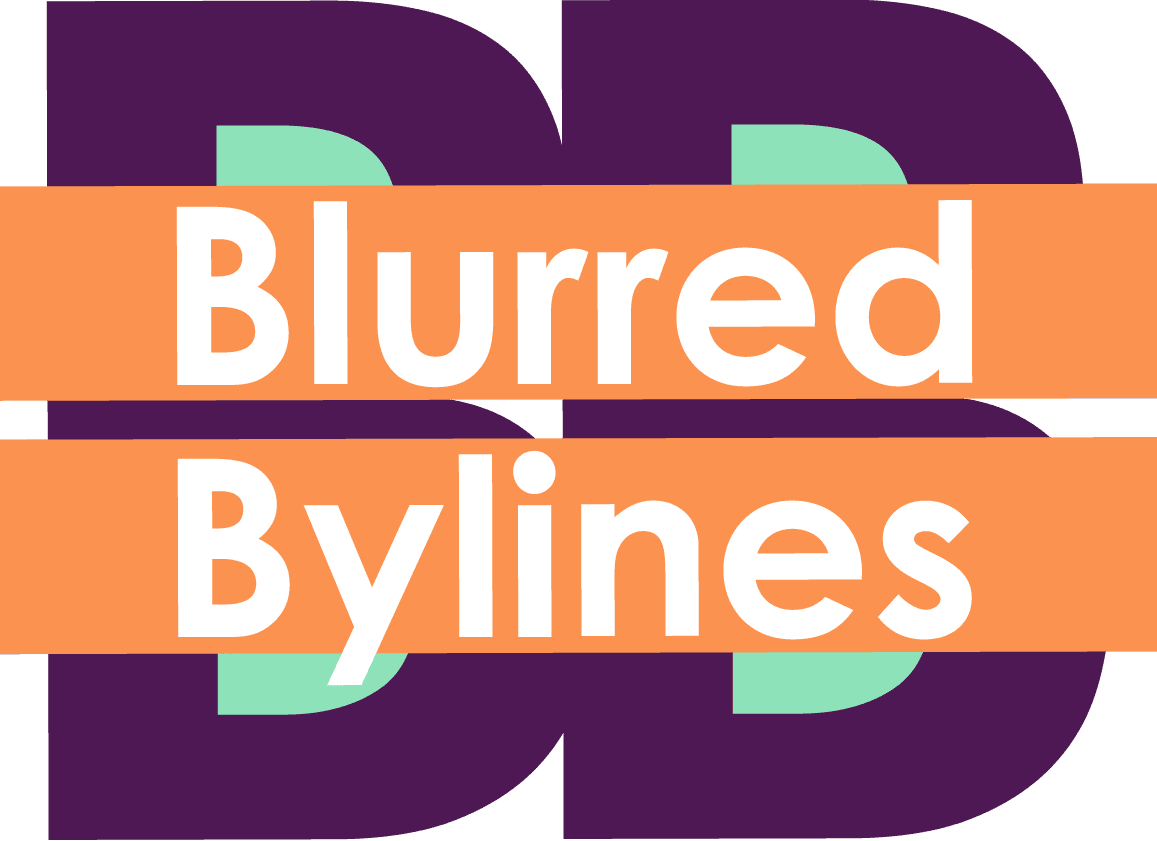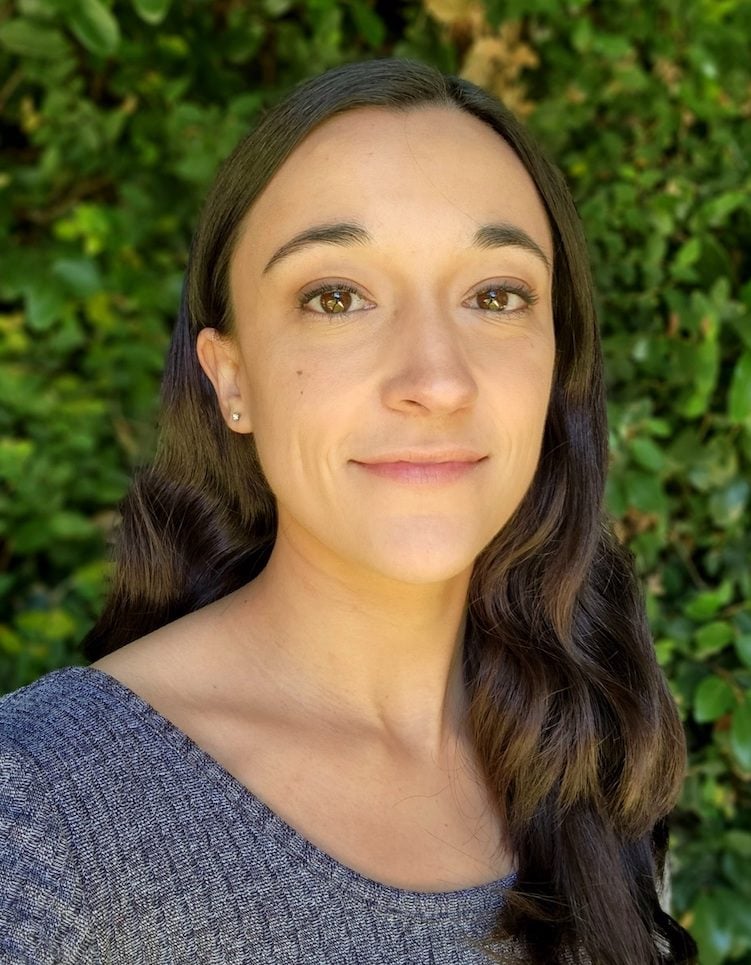Prison Gerrymandering Is a Modern 3/5 Compromise

Inmates standing outside at San Quentin State Prison. (Source)
June 11, 2021 ~ By Shari Rose
Prison gerrymandering uses the disproportionate incarceration of Blacks and Latinos to bolster political power of mostly Republican-controlled districts
America has the highest incarceration rate in the world. Additionally, Black and Latino inmates account for severely disproportionate numbers in this nation’s prisons. In 2018 alone, there were 1,501 Black prisoners for every 100,000 Black adults in the U.S. There were 268 white prisoners for every 100,000 white adults the same year.
Furthermore, U.S. prisons are typically built in rural, majority-white areas of the country. When the Census Bureau takes a count of this nation’s people every 10 years, it counts inmates in the voting district they are imprisoned in, not their home address. After the census completes, political representation and funding are adjusted to match current population sizes of communities. The larger a population, the more political power and state funding a community receives.
So, when prison populations containing mostly Black and Latino prisoners are counted in conservative, majority-white regions of the U.S., these rural communities benefit from more favorable districting and political influence at the expense of incarcerated people of color. Inmates cannot vote in the towns they are being counted in, but their bodies are still being counted to provide greater political influence to heavily Republican-controlled districts who do not share their interests. This practice is called prison-based gerrymandering, or more commonly, prison gerrymandering.
Prison Gerrymandering and the 3/5 Compromise
Prison gerrymandering in the U.S. works by artificially bloating the population numbers of largely white, conservative communities while further constricting the political power of people of color. If this phenomenon sounds familiar, it’s because this is exactly how the 3/5 Compromise operated until it was dismantled after the Civil War.
White-majority, slave-holding states successfully boosted their populations by counting individual Black slaves as three-fifths of a person. Slaves could not vote, own land, or walk freely in their communities, but their bodies were used to provide more political representation and funding to rural conservatives, just as incarcerated Blacks and Latinos are used today in prison gerrymandering.
According to an NAACP report released in 2015, rural regions of the U.S. contain only 20% of the national population, but account for 60% of new prison construction. Furthermore, in 173 counties across the country, half of the Black population are not residents, but rather prisoners who were transferred in from their own communities.
- More stories: How SSI $2,000 Limit Keeps Those with Disabilities in Poverty
- More stories: Police Killings of Latinos in Los Angeles 2016 – 2021
- More stories: Israel Has Killed a Record Number of Journalists & Aid Workers in 6 Months
99% of Comments to Census Bureau Involve Prison Gerrymandering
In 2018, the U.S. Census Bureau opened itself to public comments ahead of the 2020 census count. Of the nearly 78,000 comments left, more than 99% referenced the core issue to prison gerrymandering – that incarcerated people should be counted at their home address, not their prison address.
The Census Bureau revealed that “almost all commenters either directly suggested, or alluded to the view, that counting prisoners at the prison inflates the political power of the area where the prison is located, and deflates the political power in the prisoners’ home communities.”
But despite near-universal support for ending the practice of prison gerrymandering, the Census Bureau chose to uphold its gerrymandering policies ahead of the 2020 census.
How HR 1 Addresses Prison Gerrymandering

Congressional supporters of HR 1, known as For The People Act, hold a press conference about the bill on March 3, 2021. (Source)
As Republican-controlled legislatures across the county continue to rapidly pass voting restrictions and other extreme measures that disproportionately target the ability of marginalized communities of color to vote, Democrats in Congress have put forward HR 1. Named For the People Act, this measure would establish an automatic voter-registration system and force dark money organizations that routinely pump millions of dollars into elections to publicly disclose their donors.
With regard to prison gerrymandering, this bill would change the Census Bureau’s rules to count prisoners at their last known address, not their current prison address.
However, due to the survival of the Jim Crow-era filibuster, Democrats will not reach 60 votes in the Senate to pass this measure. And with legislators like Joe Manchin and Kyrsten Sinema holding onto a make-believe notion of bipartisanship, which hasn’t shown its face in Congress since the turn of the century, the voting rights of people of color continue to be dismantled at record rates not seen since well before the Civil Rights Act of 1964.
- More stories: The Cruelty of U.S. Migrant Detention Facilities in 2020
- More stories: The Lives of Ferguson & Black Lives Matter Activists Cut Short
- More stories: How School Portables Became Permanent Classrooms







0 Comments